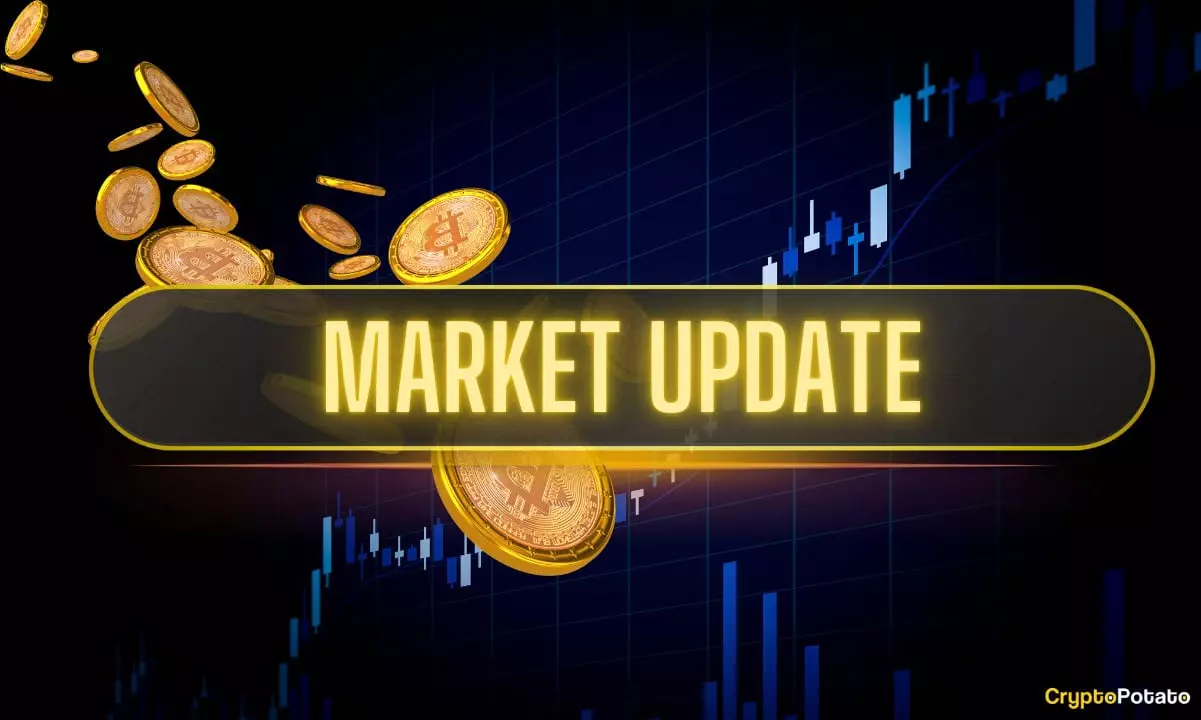For years, Bitcoin stood unchallenged at the pinnacle of the cryptocurrency world, symbolizing both its resilience and dominance. Yet, recent turbulent movements reveal that this once ironclad leadership may be slipping away. This shift isn’t merely a technical correction but a potential indicator of a deeper transformation within the crypto ecosystem. As Bitcoin stalls and declines from its recent peaks, alternative digital assets are gaining unprecedented momentum—pointing to a fundamental change in investor sentiment and market structure.
Bitcoin’s recent performance underscores a critical reality: even the most dominant cryptocurrency cannot defy market gravity indefinitely. After seeing a spectacular surge past $123,000—the highest in history—its swift retracement and prolonged sideways trading signal waning bullish confidence. The late-stage dropping below $115,000 amid large institutional asset sales, such as Galaxy Digital offloading $1.5 billion in BTC, illustrates that large players are beginning to vacate positions in Bitcoin. This is a noteworthy divergence from years past, where Bitcoin’s scarcity and institutional backing kept its price relatively steadfast. Now, the narrative is shifting toward a broader, more fragmented market where Bitcoin’s once-unassailable status is under threat.
This decline in Bitcoin’s dominance has opened a window for altcoins to step into the light. Coins like Litecoin (LTC), Ethereum (ETH), and CRO have posted impressive gains, with Ethereum reaching near $3,850 on bullish inflows from spot ETFs, while Binance Coin soared past $800. These movements suggest that investors—especially institutional entities—are diversifying beyond Bitcoin, seeking higher-yielding assets amid perceived opportunities in the altcoin arena. The narrative now leans toward a more mature, multi-faceted crypto market, where Bitcoin’s centrality is no longer assured. Instead, it faces serious competition for investor attention and capital.
The Rise of Altcoins and the Illusion of a New “Altseason”
The recent focus on altcoins isn’t merely coincidental; it signals a potential paradigm shift. What has been termed “altseason” recently appears to be more than just speculative hype—it’s a reflection of evolving priorities among market participants. While Bitcoin once served as a gateway for retail investors and institutional whales alike, the current environment suggests a movement towards more diverse portfolios. Altcoins like CRO, ENA, and LUNA have delivered mindblowing double-digit gains, capturing the interest of traders eager for high-risk, high-reward opportunities.
However, the enthusiasm for altcoins also exposes the vulnerabilities inherent in chasing rapid gains. The wild swings in tokens like XRP, which recently plummeted over 13%, and others like XLM and AAVE illustrate that this “altseason” may be more fragile than many believe. These sharp corrections undermine the idea of a genuine, sustained breakout—highlighting that many altcoins are still driven by speculative momentum rather than stable fundamentals. The danger lies in mistaking volatility for validation, risking investor capitulation if these corrections deepen.
Nonetheless, the broader picture indicates a market fragmenting into diverse niches, with capital flowing into promising sectors like blockchain infrastructure and decentralized finance. The rapid inflow into Ethereum ETFs, notably BlackRock’s ETH fund becoming the third-fastest to reach $10 billion in assets under management in under a year, exemplifies institutional confidence in specific altcoin segments. This development challenges Bitcoin’s supremacy, as big players leverage their influence to shape the market’s future trajectory based on evolving narratives and asset utility.
The Risks and Opportunities of a Shifting Market Landscape
While this emerging trend might seem unsettling for Bitcoin advocates, it fundamentally reflects a maturing market eager for innovation and diversification. The belief that Bitcoin remains the only “safe” digital asset is increasingly outdated in an era where the blockchain ecosystem offers a multitude of compelling use cases. Investors with a center-right, liberal perspective may see this development as a pathway toward a more resilient and innovative crypto landscape—one that encourages responsible risk-taking with recognition of the inherent volatility.
However, caution is paramount. The recent sell-offs driven by large co-founder transactions, such as Ripple’s $140 million XRP dump, underscore the risks of overreliance on individual market actors and speculative bubbles. These events highlight that behind the scenes, market sentiment can shift abruptly, driven by strategic moves and macroeconomic factors, rather than sound fundamentals alone.
Furthermore, technical indicators, such as the Hash Ribbons signal, suggest that Bitcoin’s recent consolidation phase might be over, hinting at a possible upcoming rally or further volatility spike. But relying solely on technical signals neglects the broader macroeconomic context—regulatory developments, institutional strategies, and geopolitical tensions will shape the next phase more decisively than chart patterns.
For the cautious investor, the current environment demands a balanced approach: embracing the opportunities presented by the burgeoning altcoin space while maintaining vigilance against the risks. Bitcoin’s recent faltering, coupled with altcoins’ volatility, suggests a period of strategic realignment—an acknowledgment that no single asset can dominate forever, especially in a market as dynamic and complex as cryptocurrencies.
In essence, this market agitation serves as a reminder that cryptocurrencies are entering a new chapter—one where diversification, innovation, and strategic positioning will determine long-term winners. While Bitcoin may still hold a prominent position, its waning dominance signals that the future belongs to a more multifaceted ecosystem, where responsible investors recognize the importance of adaptability and resilience in an unpredictable environment.
















Leave a Reply